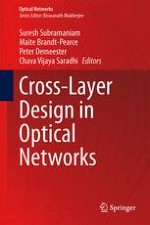2013 | OriginalPaper | Buchkapitel
7. Analytical Models for QoT-Aware RWA Performance
verfasst von : Yvan Pointurier, Jun He
Erschienen in: Cross-Layer Design in Optical Networks
Verlag: Springer US
Aktivieren Sie unsere intelligente Suche, um passende Fachinhalte oder Patente zu finden.
Wählen Sie Textabschnitte aus um mit Künstlicher Intelligenz passenden Patente zu finden. powered by
Markieren Sie Textabschnitte, um KI-gestützt weitere passende Inhalte zu finden. powered by
